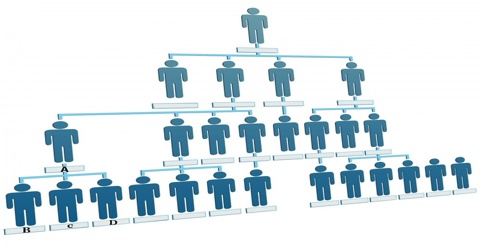Advantages of Horizontal Communication
Horizontal communication is essential for the smooth functioning of organizational activities and for interdepartmental coordination. This type of communication is especially important for large-scale enterprises. It is the conduction of information between people, divisions, departments or units within a similar level of an organizational hierarchy. The followings are the main benefits that can be derived from horizontal communication:
- Coordination:
Organizational activities are divided into various departments or groups. Horizontal communication facilitates the coordination of various departmental activities so that an organization can reach its ultimate goal. For the achievements of the estimated result of an organization inter-departmental co-ordination system must be developed which is a criterion of horizontal communication. It ensures greater efficiency and better results.
- Reducing misunderstanding:
Misunderstanding and conflict among managers and staff are very common in organizational life. Horizontal communication helps to reduce possible misunderstandings and conflicts through meetings, discussions, face-to-face conversations, etc. The chances of misunderstanding are much less as the feedback is immediate. So, it is helpful to management for enhancing mutual understanding and good decision making.
- Strengthening group efforts:
Group efforts and teamwork are essential prerequisites for organizational success. Horizontal communication helps in reducing conflicts, controversies, and differences in opinions and thus establishes consensus among the managers and workers concerned. In this system of communication, a department is well known to other departments and can exchange their affection. This consensus strengthens group efforts and team spirit in the organization. So, group activities and the direction of the sound work program will be easier.
- Performing inter-departmental communication:
Horizontal communication occurs between people at the same level in various departments. Therefore, inter-departmental communication occurs smoothly. This communication is the best system of communication in departmental communication.
- Gaining benefits of informal communication:
Though horizontal communication is formal in nature, it enjoys s some degree of informality in exchanging information as the senders and the receivers hold the same position, status, and honor. It removes jealousy, misunderstanding, etc. among the persons of equal status in the organization. It allows quick transmission of messages and solves complex problems in the organization. Many urgent decisions in the organization may be taken on the spot.
- Distortion-free communication:
Horizontal communication is usually free from distortion. Since the sender and the receiver of horizontal communication can exchange information directly, there is no possibility of distortion of the message. It enables them to discuss matters directly and personally. This checks the growth of informal communication/grapevine (rumors).
- Bringing dynamism in the workplace:
Horizontal communication helps to overcome misunderstandings and conflicts among the managers. It creates an environment of cooperation, teamwork and team spirit. This brings dynamism in performing organizational activities. If this communication is established in organizational dynamism at work will increase among workers.
- Hindering bureaucracy:
No chance of a rising bureaucracy in Horizontal communication running the organization which is helpful to make a good relationship among themselves.
In conclusion, we can say that the flow of information through the horizontal communication channel is inevitable for organizational success. In the present complex business world, the efficient functioning of a large business organization mostly depends on effective horizontal communication.















